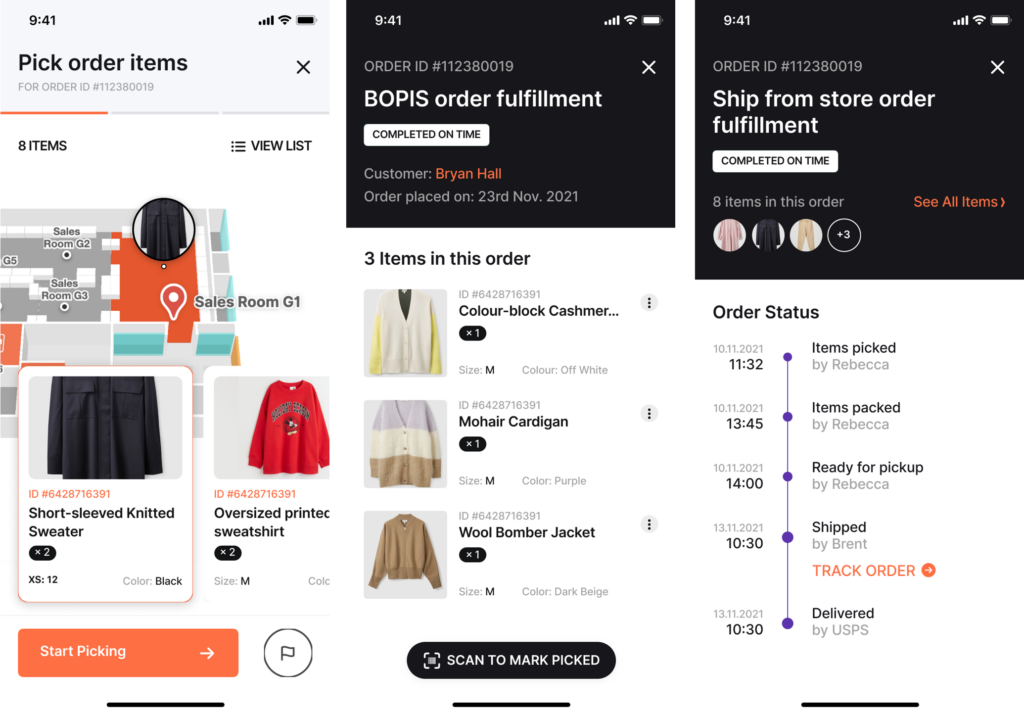


The retail industry has never been more challenging than it is today. With many problems to solve, such as inventory inaccuracies, inefficient processes, lack of real-time inventory visibility and subpar in-store operations, retailers are often left feeling overwhelmed.
At the same time, customers expect a seamless omnichannel experience and fast fulfillment of click-and-collect/BOPIS and same-day delivery orders. Here are five ways you can improve your inventory management and, by extension, improve the customer experience at your store.
Inventory is the most important factor for retailers, aside from customers. Yet, stores still have inaccuracies in their inventories that create far-reaching implications – from customer experience to the bottom line. Shopping is all about the customer experience, and if you don’t have the products that customers want to buy because they’re not in stock, you will lose money. According to Retail Dive, retailers can lose up to $1 trillion with out-of-stock items.
Inventory inaccuracies originate from a multitude of sources, such as data entry errors, theft, supplier fraud, and discrepancies during shipping and receiving. On average, retailers only have about a 65% inventory accuracy rate, according to Shopify. When products listed as available are out-of-stock or vice versa, customer dissatisfaction goes up and their chance of returning to your store goes down.
To engage in successful omnichannel commerce, retailers need the ability to track every single item, across all stores. Only with real-time visibility into stock levels can retailers reduce inventory inaccuracies and avoid out-of-stock scenarios.
RELATED READ: 7 Reasons Why Real-Time Visibility Is a Necessity
According to ECR Loss, an increase of 4-8% in sales can be achieved by improving inventory record accuracy. That’s just one of the reasons that today’s radio frequency identification (RFID) tech is quickly becoming a must for keeping tabs on inventory.
By investing in an RFID-connected store operations platform, retailers are investing in their bottom line. This technology can bring real-time inventory accuracy to and above 99%, and overhead readers can be used to track the location of every object in the store. Doing this enables stores to unlock the benefits of accurate inventory management without resorting to potentially fallible manual processes. And the invaluable inventory insights provide aid in day-to-day store operations, helping retailers to increase margins and avoid markdowns.
Inefficiency in retail largely exists due to disconnected systems and processes. There are applications for receiving, replenishment, customer experience, omnichannel fulfillment, analytics and more. These applications don’t talk to each other nor are they efficient in the onboarding process of your team, as your staff has to be trained on each application. Multiple applications for store staff often results in efficiency roadblocks and a disjointed customer experience.
Retailers should instead look for a single app that integrates with existing point-of-sale (POS) systems to deliver unified inventory management, workforce management and intelligent tasking. By doing so, it streamlines processes for employees and enhances the overall customer experience.
Artificial intelligence (AI), including large language models (LLMs), enables personalized experiences, intelligent insights and recommendations for customers and retailers. By connecting data from the sales floor, back store and across fulfillment centers, retailers can improve tasks, prioritize workflows and optimize store layouts for omnichannel success.
In smart fitting rooms, AI drives personalized stylist recommendations and frictionless checkout. Shoppers feel like VIPs, and can digitally request additional sizes and items, see recommendations and know exactly what items are available in which stores. These features not only reduce inventory inaccuracies but also build customer loyalty with your store. With frictionless checkout, retailers provide a faster and more pleasant shopping experience. Tap-to-pay technology in the smart fitting rooms or even on the store floors allows shoppers to complete their purchases quickly without waiting for employee assistance.
By combining RFID capabilities with an AI-capable platform, stores can increase the efficiency of their store associates, too. This combination creates an intelligent workforce environment by automatically generating and assigning optimal tasks, layouts, promotions, processes and analytics to retail teams. This increases labor efficiency, ensuring that each employee’s time is used in the best possible way.
Plus, RFID technology gives stores insight into exactly what they have and where it is. As a result, workers know when and how to fulfill click-and-collect (BOPIS), same-day delivery and ship-from-store orders, making for smoother, faster operations.

CHECK IT OUT: RFID + AI Infographic
In conclusion, the challenges retailers face in today’s dynamic market necessitate a proactive approach to inventory management. By embracing innovative solutions and technologies, such as real-time visibility, RFID technology, unified applications, AI and streamlined workforce management, retailers can not only enhance their operational efficiency but also deliver exceptional customer experiences. Investing in these strategies is not just about improving inventory accuracy; it’s about meeting the evolving demands of modern consumers and staying competitive. With a commitment to smarter inventory management, retailers can pave the way for sustainable growth and success in the years to come.